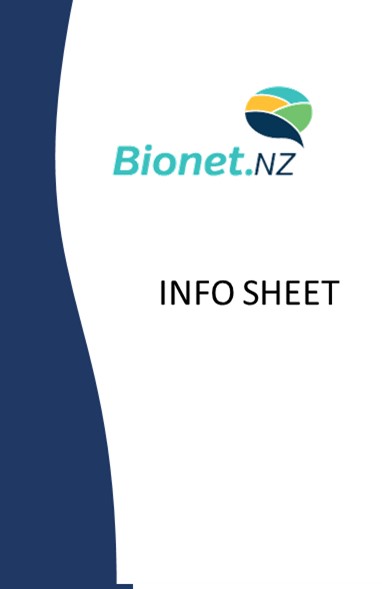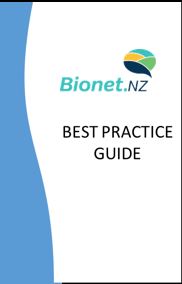Predator
Possum control and animal welfare (pdf 338 KB)
Critical to OSPRI’s work towards eradicating bovine tuberculosis (TB) from New Zealand is the need to reduce possum numbers and keep them low over an extended period of time. A range of control methods are used to accomplish this including traps (kill-traps and live-traps) and toxic baits.
Trapping best practice from Predator Free NZ
Introduced predators don’t belong here – but it is important to remove them in a humane way that avoids or minimises pain, suffering and distress – both to target and non-target animals.
All the traps we recommend have passed the National Animal Welfare Advisory Committee (NAWAC) guidelines which means they kill humanely and are easy to use and maintain.
Welfare performance of animal traps
The following information relates to the welfare performance of traps used in New Zealand for capturing and/or killing small to medium-sized mammals. The tests relate to the welfare performance of the traps, NOT to their capture efficiency, safety, costs, or target specificity.
Mouse eradication using aerial baiting Current agreed best practice used in New Zealand (pdf 334 KB)
This document provides detailed information about eradication design, planning and methods that should be applied to operational planning for eradicating mice using aerial broadcast of poison baits.
A1 Possum Population Monitoring Using the Trapcatch, Waxtag and Chewcard Methods (pdf 3.8 MB)
This Protocol outlines a method for estimating indices of relative abundance of possum populations. It is based on sampling populations using various detection devices (Traps, Waxtags or Chewcards).
A10 Feral Pigs: A Review of Monitoring and Control Techniques (pdf 3.4 MB)
Feral Pigs: A preliminary guideline towards good practice.
A11 Feral and Stray Cats: Monitoring and Control, a Preliminary Guideline towards Best Practice (pdf 3.4 MB)
Feral and Stray Cats: A preliminary guideline towards good practice.
This Guideline refers to both stray and feral cats. As defined in the code of welfare for companion cats (https://www.mpi.govt.nz/protection-and-response/animal-welfare/codes-of-welfare), released under the Animal Welfare Act 1999, feral cats are different to stray cats. Neither are owned, but strays have varying interactions and dependence on humans while feral cats are wild. It is important that cats are correctly identified so that they can be managed appropriately.
A13 Responsible Use of Bait Stations: An Operators' Guide. (pdf 3 MB)
Guidance on the use of toxic bait stations for vertebrate pest control, including legal obligations, risk management, field techniques, recording and reporting.
A14 Aerial 1080 control of possums and rabbits (pdf 2.6 MB)
Guidance on the operational steps involved in planning and managing aerial 1080 operations for local government interests. This SOP is designed to be read and used together with the (B9) Aerial 1080 Pest Control Industry Guidelines and should not be used on its own.
A15 Determining the age of wild pigs using tooth eruption (pdf 1.7 MB)
A photographic guide for field workers to help estimate the age of pigs from their jaws. Determining the age of wild pigs, using tooth eruption and estimated wear.
A3 Private Landowners’ Guide to Possum Control, Control Tools and Techniques (pdf 9.8 MB)
Private Landowners Guide to Possum Control. Control tools and techniques.
A4.1 Leghold Traps, A guideline for Capturing Possums, Ferrets and Feral Cats using Leghold Traps (pdf 12 MB)
This guideline describes the use of leghold traps for capturing possums, ferrets and feral cats.
A4.2 Kill Traps: A Guideline to Trap Possums, Ferrets, Stoats and Feral Cats using Kill Traps (pdf 8 MB)
This guideline describes the use of kill traps for capturing possums, ferrets, stoats and feral
cats.
A4.4 Possum and Ferret Traps: A report to inform and advise users of trapping products (pdf 4.7 MB)
A Report to Inform and Advise Users of Trapping Products to Ensure Proper Product Selection and Use.
A5 Pest Rabbits: Monitoring and Control Good Practice Guidelines (pdf 12 MB)
This best practice guideline to the implementation of Regional Pest Management Strategies for the control of rabbit populations.
A6 Pest Rooks: Monitoring and Control (pdf 3.4 MB)
Pest Rooks, Monitoring and Control: Best Practice Guidelines.
A7 Pest Hares: Monitoring and Control (pdf 5.7 MB)
Practical and regulatory best practice guidelines for hare control.
A8 Pest Mustelids: Monitoring and Control (pdf 2.3 MB)
Best Practice Guidelines for Monitoring and Controlling Pest Mustelids
A9 Wallabies: Control and Monitoring of pest Dama and Bennett's Wallabies (pdf 2.8 MB)
Wallabies: A Review of Monitoring and Control Techniques.
B1 Legislation Guide: User Guide to Legislation Relating to Terrestrial Pest Control (pdf 577 KB)
This document summarises legislation that is directly related to land-based pest control
activities to help contractors and staff of control agencies identify and gain an overview of
legislation relevant to their work.
B2 Vertebrate Toxic Agents: Minimum Requirements for Safe Use and Handling, Best Practice Guidelines (pdf 2.7 MB)
Summarises the regulatory aspects of using vertebrate toxic agents (VTAs). Includes additional best practice standards for the safe use and handling of (VTAs). Primary audience: field staff and contractors responsible for vertebrate pest control programs.
B7 Signage: Minimum requirements for signage where vertebrate toxic agents are laid outdoors for pest control (pdf 1.2 MB)
Outlines minimum requirements for warning signage where vertebrate toxic agents in bait form are laid outdoors for pest control. Covers the legal requirements of warning signs: - wording, design, installation, maintenance and recovery. A useful resource for agency staff and contractors implementing control programmes in the field.
B8 Tracking: Minimum requirements for tracking vertebrate toxic agents (pdf 1.7 MB)
A guideline on the minimum requirements for tracking vertebrate toxic agents. In two parts: (i) purpose and regulatory aspects, and (ii) standard forms with explanations for use, examples and key points associated with the tracking guidelines. For field staff and contractors responsible for vertebrate pest control programmes and pest managers responsible for ensuring that toxin tracking meets minimum standards.
C1 Questions and answers on 1080 (pdf 792 KB)
Answers commonly asked questions about possum control and the use of 1080. Written for the general public, it contains up-to-date research-based material and assists people to assess the relative risks and benefits of the possum control programme.
C4 The Possum Busters are coming Brochure (1080 Health & Safety brochure) (pdf 1.3 MB)
Brochure for parents and caregivers of preschool children for use by agencies and contractors during pre-operational public awareness initiatives. Developed by NPCA in consultation with the Ministry of Health and Medical Officers of Health as part of the schools’ package. Available in 3 versions, each with contact information specific to the agency responsible for the 1080 operation.
C5 Cholecalciferol: Its Use for Possum and Rodent Control. (pdf 2.1 MB)
Brochure covering aspects of cholecalciferol use for possum and rodent control. Includes
information on how cholecalciferol works, what it looks like, the risks to humans and animals
and how to keep safe when using it.
C6 Cyanide: Its use for Possum Control. (pdf 1.5 MB)
Brochure covering aspects of cyanide use for possum control. Includes information on what
cyanide looks like, the risks to humans and animals and how keep safe when using it.
C7 Brodifacoum: its use for Possum and Rodent Control in Forests and Farmland. (pdf 6.2 MB)
Information booklet about brodifacoum; who uses it and why, the risks to humans and animals, and safety aspects of its use.
C3 1080 and dogs don't mix brochure (pdf 176 KB)
A checklist for dog-owners of precautions to take to minimise risks of 1080 poisoning. Also includes a section on recognising signs of 1080 poisoning and an action plan for cases of accidental poisoning.
Humane and Effective Vertebrate Pest Control: A Review of Best Practice Management (pdf 466 KB)
MPI's best practice review for vertebrate control ensuring that the provisions of the Animal Welfare Act are met.
Rat eradication using aerial baiting Current agreed best practice used in New Zealand (pdf 552 KB)
This document provides detailed information about eradication design, planning and methods that should be applied to operational planning for eradicating rats using aerial broadcast of poison baits.
Trap testing guidelines: National Animal Welfare Advisory Committee (NAWAC) (pdf 311 KB)
To enable the welfare performance of traps to be assessed in a standardised way, the National Animal Welfare Advisory Committee (NAWAC) has developed a trap-testing guideline.
Traps & devices: Guidelines and resources
New Zealand restricts the sale and use of traps under the Animal Welfare Act 1999. Find out about traps and the regulations.
Managing animal pests - SOPs and technical documents from the Department of Conservation
Find DOC's standard operating procedures (SOPs) and other technical documents that are used when planning animal pest operations.
Resource kit for rodent and cat eradication
The PII Resource Kit provides project managers with a systematic approach to planning and implementing rodent and cat eradication projects on islands in the Pacific. PII has worked with Pacific agencies (both government and non-government organisations (NGOs)) to strengthen their capacity for managing invasive species since 2004.
New Zealand national cat management strategy group (ncmsg) report 2020
The NCMSG recognises the intrinsic value of cats as complex and sentient beings, their value as a companion animal in New Zealand, and their value to communities, and New Zealand society. The NCMSG also recognises the importance of balancing the needs of cats, cat owners, and cat carers with the potential negative impacts of cats on communities, other species, and ecosystems. This report outlines recommendations and supporting evidence to achieve humane management of cats in New Zealand to protect both cat welfare and our unique environment.
Pest animal control guidelines for the Auckland region
Council has produced this guide to give you the information you need to humanely protect our special places, be they the local bush, around your house or your local community. We’ve tried to strike a balance between keeping the information simple and providing enough information for you to be successful.


